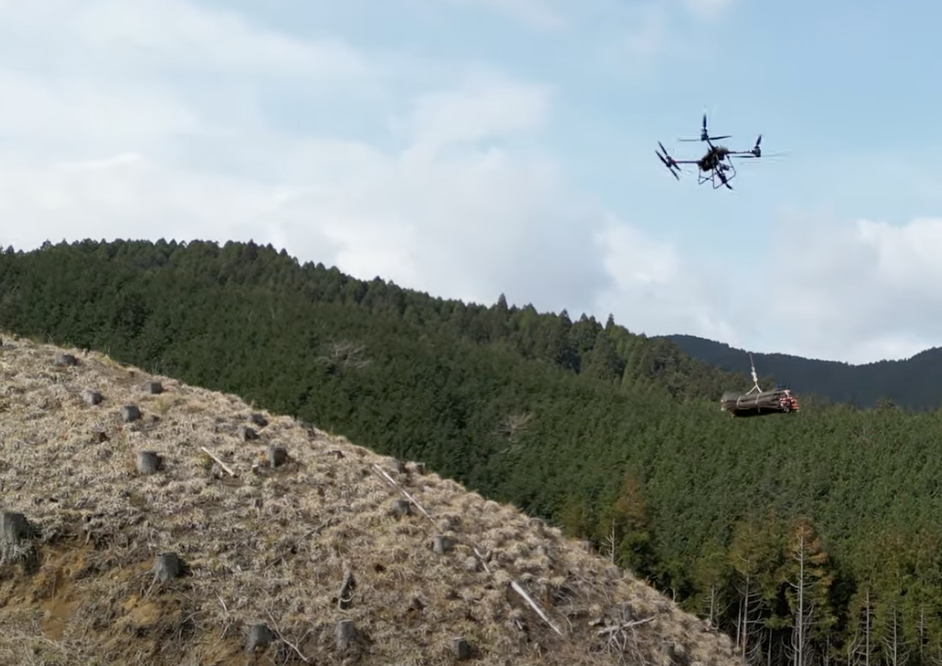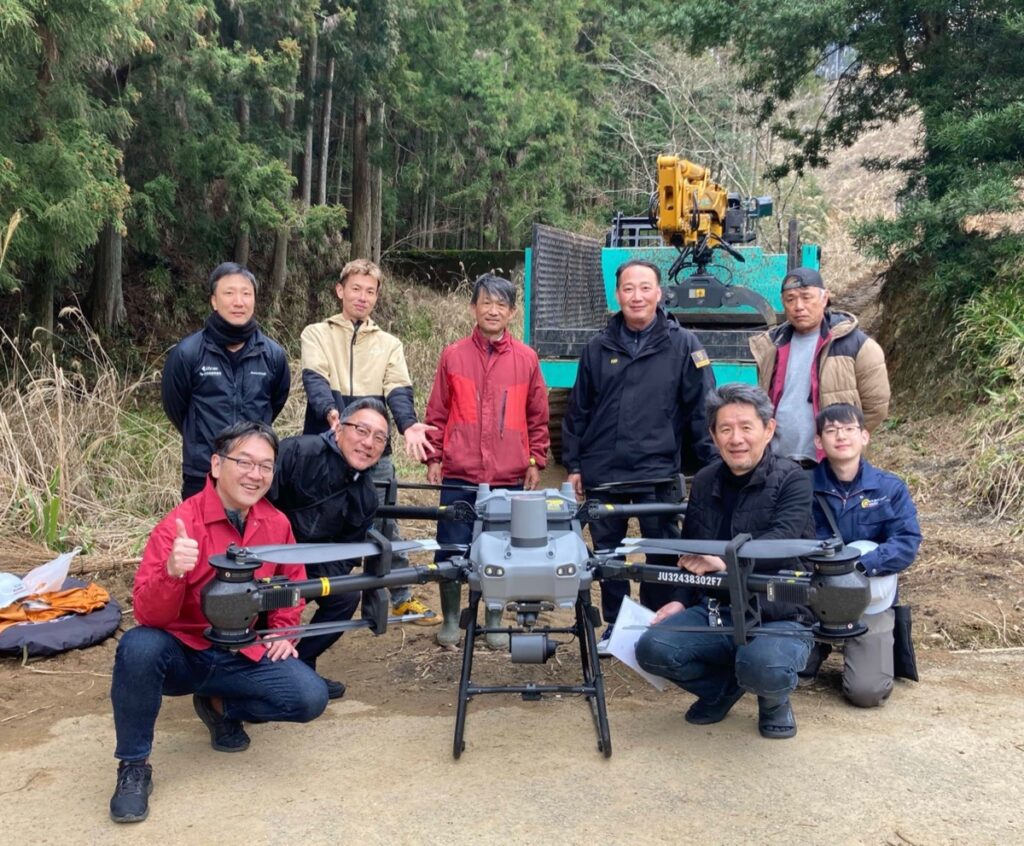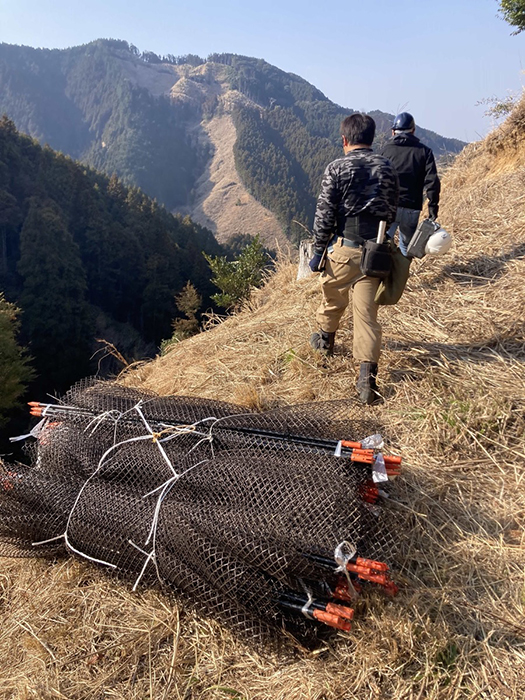Updated by "Forest Circular Economy" Editorial Board on April 09, 2025, 10:00 AM JST
Editorial Board, Forest Circular Economy
Forestcircularity-editor
We aim to realize "Vision 2050: Japan Shines, Forest Circular Economy" promoted by the Platinum Forest Industry Initiative. We will disseminate ideas and initiatives to promote biomass chemistry, realize woody and lumbery communities, and encourage innovation in the forestry industry in order to fully utilize forest resources to decarbonize the economy, strengthen economic security, and create local communities.
The number of forestry workers in mountainous areas is decreasing year by year due to the inaccessibility of heavy machinery and vehicles. In March, TorbizOn (Fukuoka City) and other companies conducted a demonstration experiment using a large logistics drone to airlift approximately 4 tons of forestry materials in the mountainous area of Soeda-cho, Fukuoka Prefecture. This initiative, realized through collaboration between the Soeda-cho forestry cooperative and four private companies, has the potential to revolutionize the logistics structure of forestry workplaces.
The site in Soeda-cho, where the demonstration experiment was conducted, had previously required a great deal of manpower and time to transport large materials due to the steep terrain and difficulty in accessing the site. The materials to be transported were forestry materials such as Supplement Guard for protecting saplings and seedlings.

The DJI FlyCart30 used for the demonstration is a large drone with a maximum payload of 40 kg, a cruising range of 16 km (when fully loaded), and a maximum flight time of 18 minutes. This time, it transported a total of approximately 4 tons of materials to 10 unloading points over a two-day period.
The demonstration experiment was conducted in collaboration with the following four companies

Quantitative data was collected and analyzed, focusing on flight safety, transport efficiency, workload reduction, and cost-effectiveness. The practicality and benefits of introducing logistics drones were clarified.
The airlifted sapling protection supplement guards serve to reduce the risk of saplings being damaged by falling, abrasion, wind and rain on steeply sloped forestry sites. Because saplings are delicate in their early stages, it is important that the protective guards protect the saplings well during transport and installation on steep slopes and uneven terrain at the site.

Japan's forestry industry is chronically suffering from an aging workforce and a shortage of young workers, and transporting workers up steep slopes deep into the mountains is particularly physically demanding and difficult to ensure safety. As this verification experiment shows, drone air transportation has potential as a means of supplementing the labor force, and if legal and cost issues can be overcome, it is expected to take root as a new logistics infrastructure.